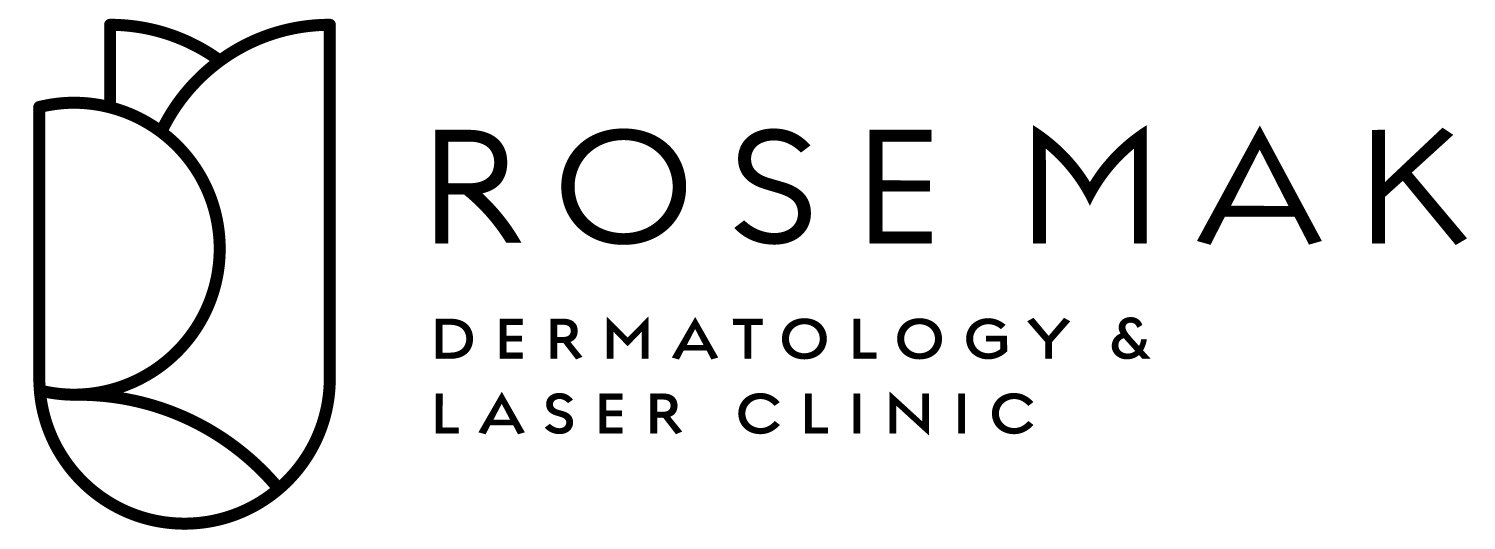暗瘡診所
麥景行醫生 – 暗瘡診所
麥景行醫生開設的暗瘡診所深受病人和轉診醫生(包括全科醫生和專科醫生)的歡迎。 麥景行醫生對暗瘡的治療有著特殊的興趣,樂於根據您個人的需要製定個性化的治療計劃。
暗瘡是青少年和成年人面臨的常見皮膚問題,也是我們診所治療的最常見的疾病之一。暗瘡的早期治療非常重要,若發現暗瘡問題而忽略不予以治療的話,暗瘡可能會造成永久性的傷疤。
暗瘡是非常普遍的皮膚病。它是因毛囊及其相關的油脂 (皮脂腺) 腺 (稱為毛囊皮脂腺單位) 的紊亂而造成的一種皮膚病。
毛囊及其相關的油脂腺堵塞和發炎時,通常會在面部、前額、胸部、上背部和肩膀出現白頭、黑頭或粉刺。
增大的油腺內出現油脂和死皮細胞後,造成了堵塞。這種油塞和死細胞被稱為粉刺。粉刺發炎後轉成暗瘡。
造成暗瘡的因素有很多,包含:
- 遺傳因素 – 是造成暗瘡的一個因素。若青少年的父母有暗瘡,他/她很有可能也會有暗瘡。
- 荷爾蒙失調 – 雄激素是負責男性特徵和生殖活動的一組激素。睾丸激素是其中的一個主要雄性激素。男女都會產生雄性激素,而在青春期,該激素的水平最高。雄性激素影響頸部、後背、面部、肩膀和胸部的皮脂腺,會造成皮脂腺擴大,並產生更多的油脂(皮脂)。由於上述原因,暗瘡在青春期尤為普遍。因懷孕和使用口服避孕藥而造成的荷爾蒙方面的變化也會影響皮脂的產生。諸如多囊卵巢綜合徵等情況可能導致荷爾蒙失調失衡,從而誘發暗瘡。
- 飲食因素 – 研究表明,包括乳製品、朱古力和富含碳水化合物的高血糖指數(GI)食物可能會加重暗瘡 ,至於其潛在的作用機制則還有待進一步研究。因此低血糖指數(GI)的飲食可能會有助於暗瘡症狀的改善。
- 藥物 – 包含皮質類固醇,睾丸激素或鋰等成分的藥物可能會造成暗瘡症狀的惡化。
- 壓力 – 當個人承受較大的情感方面的壓力時,腎上腺會產生更多的雄性激素。而這則可加重暗瘡的症狀。
根據暗瘡的嚴重程度特徵各不相同,包括:
- 白頭 (封閉性毛孔堵塞)
- 黑頭 (開放性毛孔堵塞)
- 小型紅色的、易感疼痛的隆起 (丘疹)
- 粉刺 (膿包),這些是有膿的丘疹
- 皮膚表面下有較大,疼痛的腫塊(結節)
- 皮膚表面下疼痛的腫塊,裡面有膿(囊性病變)
大約有80%的人會在任何時候受到暗瘡的影響。無論任何種族背景的男女都會受到暗瘡的影響。暗瘡在青春期最容易發生,這是因為青春期性激素水平激增,而性激素可以刺激我們皮膚內的皮脂腺增大,從而增加皮脂(油)的產生,更容易形成暗瘡。然而,儘管青春期和成年早期增加了暗瘡的易感性,但所有年齡段的人都可能長暗瘡。有些成年人,青春期沒有長過暗瘡,但是成年後卻長了暗瘡。皮膚科醫生看到越來越多的女性在30多歲、40多歲、50多歲甚至更年長的年紀還會長暗瘡。
雖然暗瘡在青少年和成年早期的人群中更為常見,但是兒童也會生暗瘡。
若兒童生了暗瘡,您可以來帶著孩子來麥景行醫生的診所,她會給您建議更適合兒童的痤瘡治療方案。
治療暗瘡非常重要, 不能任其發展,這是因為:
- 若不治療,暗瘡消下去後會在皮膚上留下永久的疤痕
- 治療暗瘡可以提高個人的自尊
- 現在有很多有效的治療方案
麥景行醫生可以幫您控制暗瘡的發展,避免結疤,避免使其他的皮膚損傷,並且有辦法處理已有的疤痕,使其看起來不那麼顯眼。
我們可根據您的個人需要而定制適合您的痤瘡治療方案。
外用藥
治療暗瘡最為常見的外用處方藥有:
- 類維生素A。有乳霜也有凝膠。類維生素A藥物是在維生素A中提取的。該藥物在晚上使用。它可通過防止毛囊堵塞而發揮 作用,但是可能會造成局部皮膚的干燥和敏感,為緩解副作用,可以嘗試每週使用三次,皮膚適應後,再逐漸增加到每日使用。
- 抗生素。抗生素可以殺滅皮膚上過多的細菌,緩解皮膚發紅的現象。通常與類維生素A配合使用, 早上使用抗生素,晚上使用類維生素A。為防止出現抗生素的耐藥性,抗生素往往與過氧化苯甲酰搭配使用。
- 壬二酸。壬二酸是正常皮膚上的酵母產生的天然物質,其具有抗菌性。
口服藥物
我們的皮膚科醫生會與您商量使用不同的口服藥物,包括:
- 抗生素。口服抗生素可以用來治療中度至重度暗瘡,減少細菌和炎症。常用於治療暗瘡的口服抗生素包含四環素類抗生素或大環內酯類抗生素。口服抗生素往往與外用的類維生素A和過氧化苯甲酰搭配使用。
- 雄激素抗劑。雄激素抗劑可阻斷雄激素對皮脂腺的影響,某些婦女和少女可考慮使用此類藥物。
- 口服維生素A衍生物藥片可以治療頑固暗瘡以及其它治療方案不起作用的暗瘡。口服維生素A衍生物藥片是只能由皮膚科醫生處方的藥物。
Acne is a very common skin condition. It is a disorder of the hair follicle and its associated oil (sebaceous) gland (known as the pilosebaceous unit) in our skin.
When the hair follicles and the associated oil glands become blocked and inflamed, whiteheads, blackheads or pimples develop and usually appear on the face, forehead, chest, upper back and shoulders.
When oil and dead skin cells become trapped in enlarged oil glands, a plug is created. This plug of oil and dead cells is known as a comedone. When a comedone becomes inflamed, it turns into acne.
A number of factors may cause acne, including:
- Genetics – genetics factors play a role in acne. If a teenager’s parent had acne, he/she may be more likely to develop acne.
- Hormonal disorders – androgens are a group of hormones responsible for male traits and reproductive activities. Testosterone is an example of a major androgen. Androgens are produced by both men and women and their levels are highest in puberty. Androgens affect oil glands on the neck, back, face, shoulders and chest, causing them to enlarge and produce more oil (sebum). As a result of the above acne occurs more commonly during puberty. Hormonal changes relating to pregnancy and the use of oral contraceptives can also affect sebum production. Conditions such as polycystic ovarian syndrome may result in hormonal imbalance and predisposition to acne.
- Dietary factors – studies suggest that high glycaemic index (GI) food including dairy products, chocolate and carbohydrate-rich foods may worsen acne and further study is needed to examine the potential underlying mechanism. Hence a low-GI diet may help to improve acne.
- Medications – drugs that contain corticosteroids, testosterone or lithium may worsen acne.
- Stress – adrenal glands produce more androgens when an individual is emotionally stressed. This can worsen acne.
These may vary depending on the severity of condition and include:
- Whiteheads (closed plugged pores)
- Blackheads (open plugged pores)
- Small red, tender bumps (papules)
- Pimples (pustules), these are papules with pus
- Large, painful, solid lumps underneath the skin surface (nodules)
- Painful lumps filled with pus underneath the skin surface (cystic lesions)
Approximately 80% of the population would be affected by acne at any one time. Acne affects men and women of all ethnic backgrounds. Adolescence is the most common time to develop acne because of a surge in levels of sex hormones which stimulate the oil glands in our skin to enlarge, thereby increasing sebum (oil) production and results in an increased chance of acne formation. However, despite increased susceptibility to acne during adolescence and young adulthood, people of all ages can get acne. Some adults develop acne despite an acne-free youth. Dermatologists are also seeing a growing number of women developing acne in their 30s, 40s, 50s and beyond.
Although acne is more common in adolescents and young adults, children get acne too.
If your child has acne, you may consider bringing your child to see Dr Mak who can recommend treatments that are suitable for children.
It is important to treat acne rather than let it run its course because:
- Without treatment, permanent scars can appear on the skin when acne clears
- Treating acne improves individual’s self-esteem
- Many effective treatments are now available
Dr Rose Mak can help you control acne, avoid scarring and other skin damage and make existing scars less noticeable.
Our acne treatments can be tailored to suit your individual needs.
Topical medications
The most common topical prescribed medications for acne are:
- Retinoids. These come as creams and gels. Retinoid drugs are derived from vitamin A. This medication is applied in the evening. It works by preventing plugging of the hair follicles but may cause local dryness and irritation and to help reduce these potential treatment side effects, one may begin treatment with three times a week, then eventually increased to daily as your skin becomes used to it.
- Antibiotics. These kill excess skin bacteria and reduce redness of the skin. They are usually used in combination with a retinoid, with the antibiotic applied in the morning and the retinoid in the evening. The antibiotics are often combined with benzoyl peroxide to prevent the likelihood of antibiotic resistance.
- Azelaic acid. Azelaic acid is a natural material produced by a yeast living on normal skin and has antibacterial properties.
Oral medications
Our dermatologist will discuss different oral medications that can be used including:
- Antibiotics. Oral antibiotics may be used to treat moderate to severe acne to reduce bacteria and inflammation. Common oral antibiotics used to treat acne include tetracycline antibiotics, or a macrolide antibiotic. Oral antibiotics are commonly used in combination with topical retinoids and benzoyl peroxide.
- Anti-androgen agents. Anti-andorgen agents block the effects of androgen hormones on the sebaceous glands and may be considered in certain women and adolescent girls.
- Oral vitamin A derivative tablets and can treat persistent acne and acne that does not respond to other treatments. Oral vitamin A derivative tablets can only be prescribed by dermatologists.
